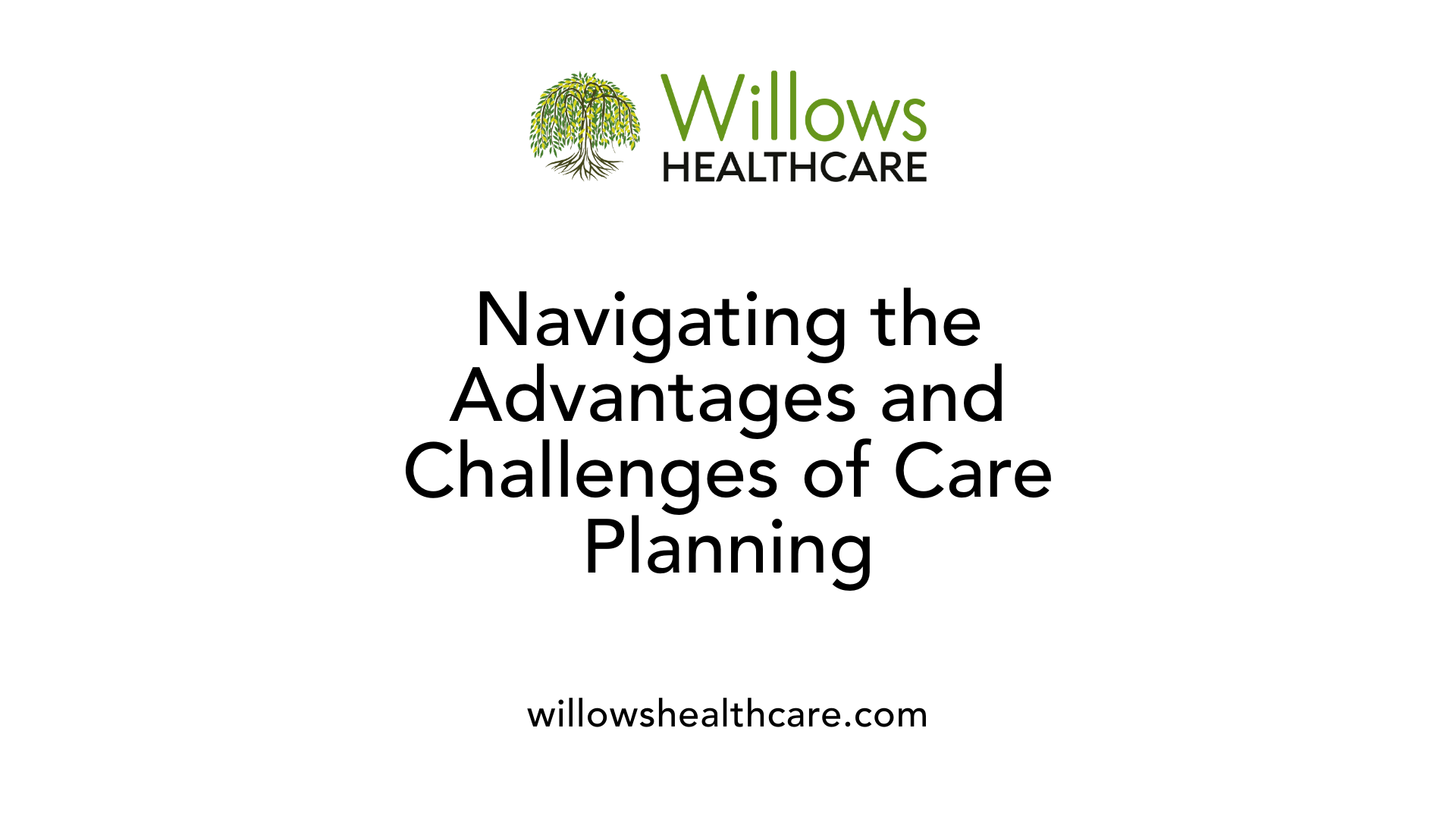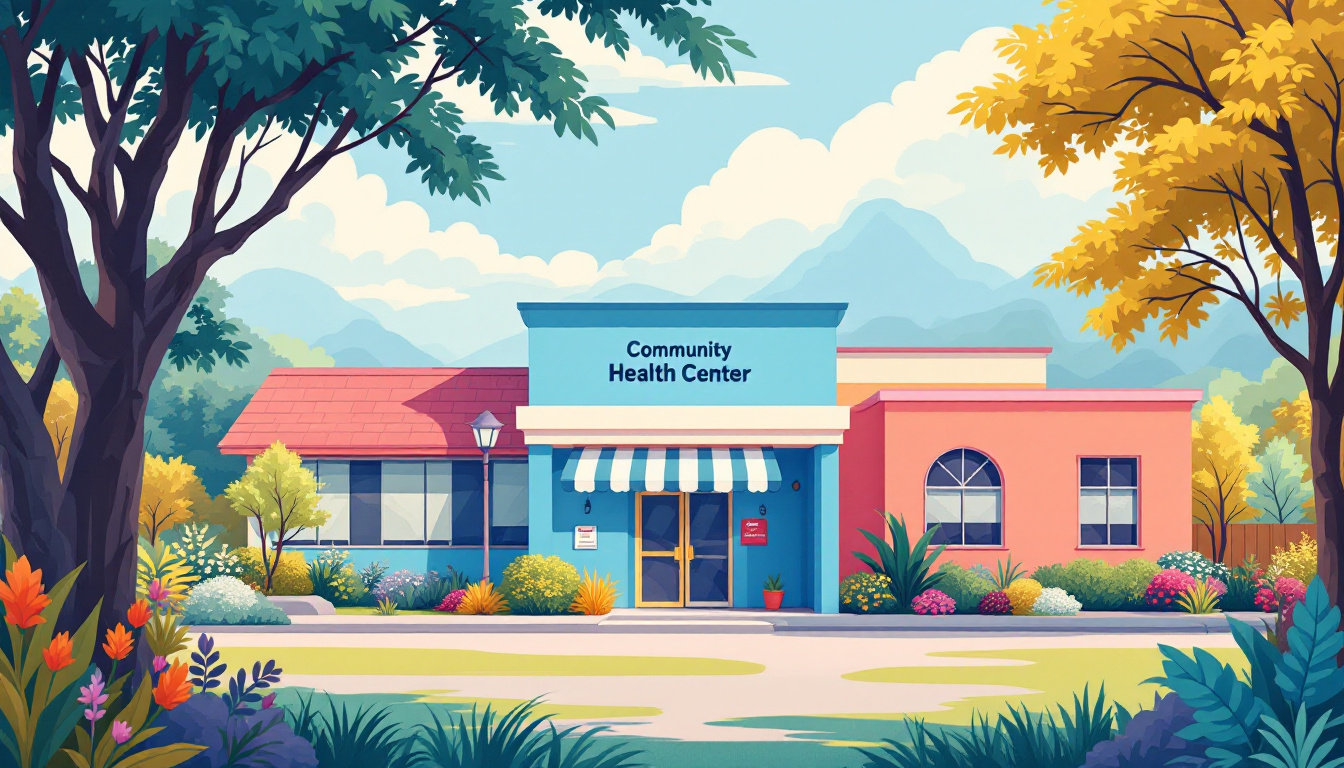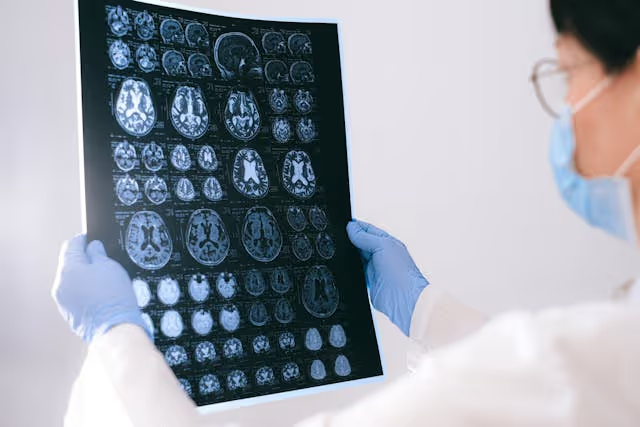The Role of Care Planning in Effective Home Healthcare at Willows Healthcare
February 7, 2025
Enhancing Home Healthcare Through Comprehensive Care Planning


Introduction to Care Planning in Home Healthcare
In recent years, the healthcare landscape has witnessed a transformative shift from traditional institutional settings to the provision of healthcare services within the home. This model aims to combine the best of medical care with the comfort and familiarity of the patient's personal environment. At the heart of this paradigm is the critical role of care planning, a process that ensures personalized, holistic, and continuous healthcare services tailored to individual needs. This article explores the multifaceted role of care planning within Willows Healthcare's home healthcare services, emphasizing how it enhances patient outcomes and healthcare delivery.
The Core Components of Effective Care Planning

Defining care planning and its significance
Care planning in home healthcare is a structured approach to ensuring that the care delivered aligns with an individual’s health and wellbeing needs. It facilitates collaborative conversations between patients, caregivers, and healthcare practitioners, emphasizing meaningful involvement for all parties. This process respects the individual's experiences, choices, and aspirations, adhering to principles like the Mental Capacity Act (MCA).
The care plan must document consent and focus on the individual's rights, autonomy, and best interests. It also encourages active participation from the individual and their support network, enhancing the customization of care. Regular reviews of these plans are vital to adapt to shifting preferences and needs.
Core elements of care plans
A comprehensive care plan typically includes:
- Assessment of Needs: Regular evaluations to identify both physical health and psychosocial needs.
- Interventions: Individualized and standardized strategies to address those needs.
- Documentation: A dynamic record that outlines specific goals, progress, and adjustments over time.
- Communication: Clear channels among family members, caregivers, and healthcare professionals to ensure everyone is on the same page regarding care delivery.
As research shows, effective care planning not only improves outcomes but also significantly enhances the quality of care provided.
Integration of personal needs and preferences
Personalized care plans integrate individuals' unique needs and preferences into a cohesive blueprint, enhancing their overall health and emotional well-being. The incorporation of personal routines and interests into care strategies fosters not only physical well-being but also engages the emotional aspects of care, facilitating a more holistic approach.
Furthermore, evolving the care plan over time ensures it continues to meet the individual's changing circumstances, thereby promoting optimal health outcomes and patient satisfaction. This customized approach not only promotes higher quality of care but also improves vital aspects of patient experience, crucial for effective home healthcare.
Design Strategies and Care Environment Optimization

Role of design in home healthcare
The design of a home for healthcare plays a pivotal role in the overall effectiveness of care delivery. An environment that is thoughtfully crafted enhances not only the medical treatment but also addresses emotional and psychosocial needs. This dual focus is essential in fostering a comforting and familiar atmosphere where patients can thrive.
Evidence-based design strategies
To optimize healthcare at home, several evidence-based design strategies are vital:
- Building Layout: Well-planned spaces that facilitate easy movement and access to care providers.
- Patient-handling Equipment: Essential tools that ensure safe and effective handling of patients without compromising comfort.
- Accessibility Features: Installations that enhance mobility and ease of access for patients, especially those with disabilities.
- Technology Integration: Utilizing advanced software platforms that streamline care management and communication among caregivers.
Research indicates that these strategies contribute significantly to positive patient outcomes.
Impact on patient outcomes
The implementation of evidence-based design has shown to decrease mortality rates and improve functional outcomes in home healthcare.
By creating conducive home environments that cater to both physical and emotional needs, healthcare providers enable patients to recover and manage their health effectively, often with greater satisfaction than care received in traditional institutional settings.
The Dynamic Nature of Personalized Care Plans

Personalization in Care Planning
Personalized care plans act as individualized blueprints for each patient, crafted to match their unique needs and preferences. These plans focus on integrating aspects related to daily routines, health conditions, and social environments, ensuring that every intervention aligns with the individual's lifestyle. By prioritizing both physical health and emotional well-being, personalized plans create a more holistic approach to care.
Adaptation and Updates
A significant advantage of personalized care plans is their dynamic nature. These plans are not static; they evolve in response to the changing conditions of the patient. Regular assessments enable caregivers and healthcare providers to adapt the plans, ensuring that they remain relevant and effective over time. Continuous monitoring fosters an environment in which care can be adjusted promptly, ultimately supporting better health outcomes.
Role in Enhancing Care Quality
The integration of personalized care plans fosters robust communication among family members, caregivers, and healthcare professionals. This central document serves as a reference point, reducing misunderstandings and promoting collaborative care environments. Research indicates that when care plans are tailored to individual needs, they significantly enhance the quality of care provided, making the experience more effective for patients and caregivers alike.
| Aspect | Description | Benefit |
|---|---|---|
| Personalization | Tailored blueprints for individual needs and preferences | Supports comprehensive care |
| Adaptation | Dynamic updates in response to changing patient conditions | Ensures relevance and effectiveness |
| Communication | Centralized documentation among stakeholders | Reduces misunderstandings, enhances collaboration |
This multifaceted approach ensures that care delivery not only meets the medical needs of patients but also nurtures their emotional and social welfare.
Technological Advancements in Care Planning

Role of technology in home healthcare
In the realm of home healthcare, technology is revolutionizing how care is delivered and managed. By integrating advanced software into care planning, home healthcare agencies can streamline operations and improve overall patient outcomes.
Software platforms for care management
Various specialized software platforms facilitate better organization of care tasks. These platforms enable:
- Detailed Documentation: Keeping meticulous records of patient data, health assessments, and care plans.
- Communication Tools: Allowing caregivers, healthcare professionals, and family members to collaborate seamlessly.
- Real-Time Updates: Providing immediate access to changes in patient conditions or adjustments in care plans.
Impact on organizational processes
The incorporation of technology into care planning deeply impacts organizational processes within home healthcare agencies. It aids in:
- Efficient Management: Structuring care management, which reduces staff workload and minimizes errors.
- Improved Quality of Care: Enhancing coordination among caregivers, thereby elevating the standard of patient care.
- Adaptability: Enabling dynamic adjustments to care plans as patients' needs change over time.
How do technology and software enhance care planning in home healthcare?
Technology and software enhance care planning by streamlining organizational processes and enabling efficient management of care services. Platforms dedicated to healthcare management provide tools for detailed documentation, communication, and real-time updates, which help in coordinating efforts among caregivers, family members, and healthcare professionals, thus promoting a higher quality of care and more effective service delivery.
| Area of Impact | Benefits | Examples |
|---|---|---|
| Documentation | Enhanced record-keeping | Electronic health records (EHR) |
| Collaboration | Seamless communication | Secure messaging applications |
| Adaptability | Dynamic care adjustments | Patient management software |
Challenges and Benefits of Care Planning

What are the benefits and challenges of care planning in home healthcare?
Effective care planning in home healthcare provides numerous advantages. Firstly, it can significantly improve patient outcomes by ensuring that care is personalized and aligned with individual needs and preferences. With tailored care plans, patients often experience reduced hospital readmissions, as their healthcare is managed proactively in the comfort of their homes.
Enhanced patient satisfaction is another critical benefit, as personalized and consistent care creates a supportive environment for recovery. By addressing not only the physical health aspects but also the emotional and social dimensions, care plans contribute to the overall well-being of patients, fostering a holistic approach that benefits both patients and caregivers.
However, the implementation of effective care planning is not without its challenges. Resource constraints can hinder the ability of home healthcare agencies to maintain quality patient care. Ensuring ongoing and comprehensive communication among all stakeholders—including family members, caregivers, and healthcare providers—remains a significant hurdle. Additionally, care plans must evolve continuously to adapt to the changing needs of patients, which requires robust monitoring and flexibility in adjustment.
Best practices for overcoming barriers
To navigate these challenges successfully, several best practices can be employed. Continuous training for caregivers can enhance their ability to implement and adapt care plans effectively. Incorporating flexible and dynamic planning tools will facilitate updates as patient needs evolve, ensuring care remains relevant and effective.
Lastly, actively involving patients and their families in the care planning process fosters collaboration. This teamwork enriches the care experience, making it more effective and aligned with individual preferences. Through these strategies, home healthcare agencies can tackle challenges while reaping the substantial benefits of comprehensive care planning.
Conclusion: The Future of Home Healthcare at Willows Healthcare
As healthcare continues to evolve, the integration of tailored care planning within home healthcare services remains pivotal. Willows Healthcare is committed to advancing this practice, ensuring that every patient receives personalized, high-quality care in the comfort of their own home. With a focus on evidence-based design strategies, dynamic care plans, and cutting-edge technology, Willows Healthcare aims to redefine home healthcare delivery, overcoming challenges and maximizing patient outcomes for a brighter healthcare future.
References
- Healthcare at Home: A White Paper | The Center for Health Design
- The Role of Personalized Care Plans in Home Health Care
- Care Plan Improvement in Nursing Homes: An Integrative Review
- Benefits of Effective Care Planning in Home Health Care - CareVoyant
- MCA: Care planning, involvement and person-centred care - SCIE
- Using the MCA key principles in care planning - SCIE
- Mental Capacity Act (MCA) and care planning - SCIE
- Personalised and person-centred care - SCIE
Latest Blog

March 5, 2025
Heart Healthy Exercises For Seniors
Enhancing Cardiovascular Wellness Among Older Adults

March 5, 2025
Benefits Of Yoga For Seniors
Exploring the Life-Enhancing Power of Yoga for Older Adults
































.jpeg)










































































































































































































.avif)






















































.jpeg)

































































.jpeg)














.jpg)









































.jpeg)












































































.avif)




.avif)

















































.avif)








































.avif)




























































































































